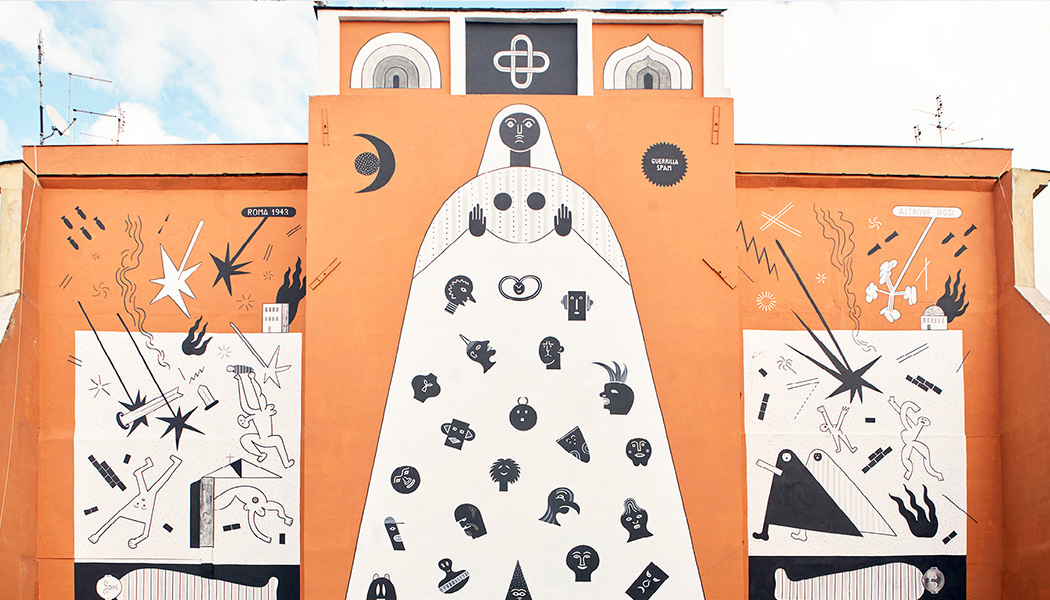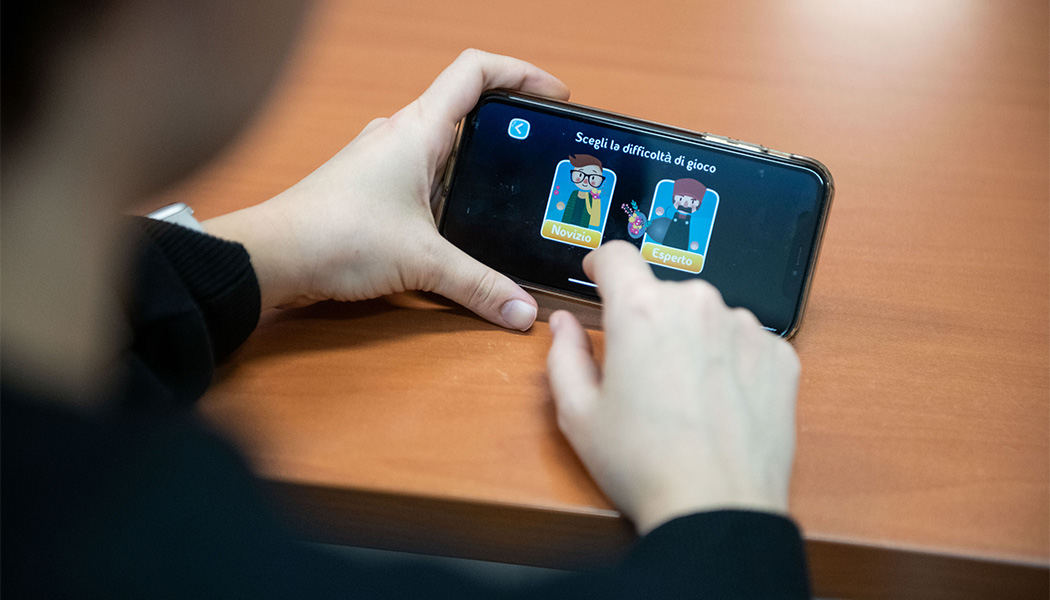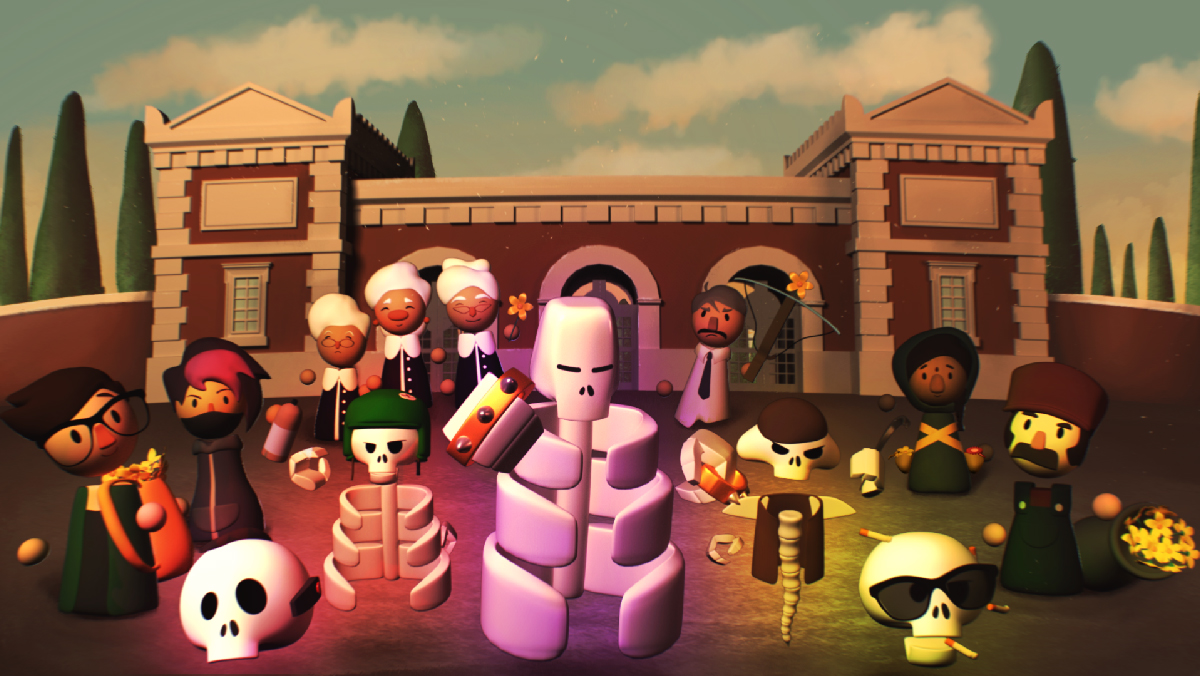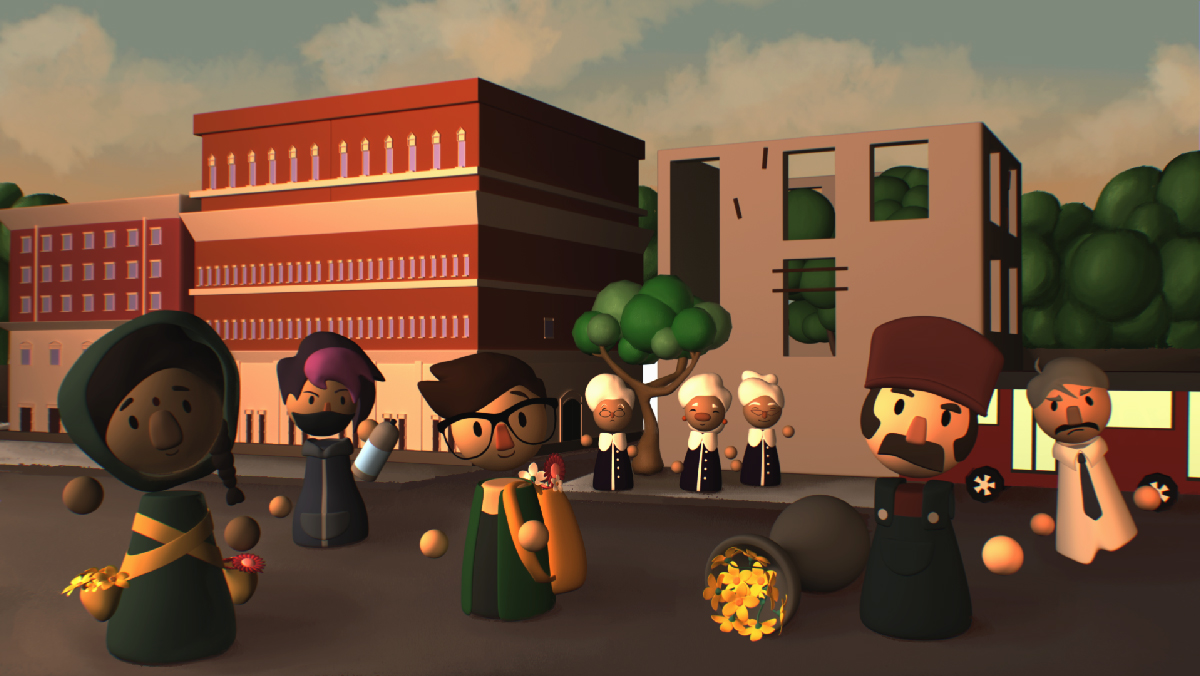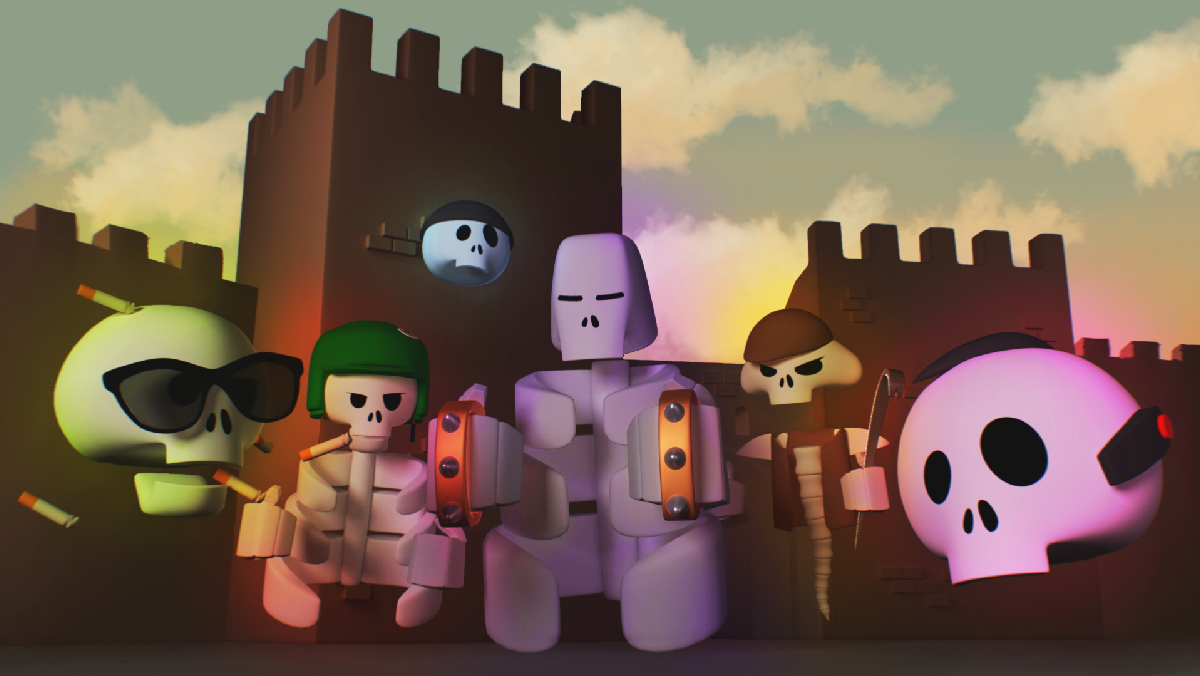SanLo’ project: urban, social regeneration and territorial identity
Thanks to the opportunities offered by the Lazio Region within the framework of the DTC, RUFA has structured a cultural regeneration project for the San Lorenzo district. The experience, for the first time in Italy, sees an Academy of Fine Arts (RUFA) and two state universities (La Sapienza and Viterbo) interacting in the field of research and production in the artistic sector.
The objective of the San Lorenzo Defence project – funded by the Lazio Region for the development of innovative initiatives for the enhancement of Cultural Heritage – is to discover the cultural sites of San Lorenzo with a new approach: gaming!
The developed video game aims to be an immersive and engaging experience that invites players to discover the cultural and socially significant sites of Rome’s iconic district. The currently implemented and playable locations are: the Verano Cemetery, the Statue of Minerva, the House of Memory, and the Porta Tiburtina. But there will be over thirty interesting places in the district to explore and defend.
RUFA’s sensitivity towards this area of the capital is evident from the path the Academy has taken over the years. RUFA has strongly wanted to place many of its activities in the Pastificio Cerere, significantly contributing to the cultural revival of the area. In just a few years, countless exhibitions, talks, conferences, and cultural events have taken place in San Lorenzo, particularly in the exhibition space RUFA Space.
SANLO DEFENCE
SANLO is based on gamification to encourage and develop a new attractive vocation for the San Lorenzo district and to spread knowledge of 25 cultural sites in the neighborhood to the general public, promoting their access and visitation. It is a collaborative, free-to-play video game for mobile platforms that combines the “Tower defense” game genre, “Real World Adventure,” and “Action RPG.”
From the tombs of the Verano cemetery, groups of zombies and other monstrous beings are organizing to form an army with the goal of attacking and defeating the residents of the neighborhood, allied with the out-of-town students and the associative spaces operating in the area.
The army of zombies, drug dealers, and speculators wants to seize the cultural sites of San Lorenzo first, and then extend their control over the commercial activities, squares, and common goods.
Players have the objective of preventing this devastation, and to do so, they unite and collaborate to defend the neighborhood. The clash takes place under the supervision of the goddess Ceres, who has both an infernal and a solar aspect (she is a maternal goddess, of the earth and fertility, of births and harvests, but at the same time she is connected to the world of the dead, to the opening of the pit of the Caereris mundus) and can help one faction or the other depending on the gifts and sacrifices dedicated to her.
The project, developed primarily by students, aims to provide multidisciplinary experiences that involve interaction between programmers and video game developers. Similarly, it seeks to encourage the hybridization of languages, overcoming the traditional separation between artistic/humanistic and technical/scientific approaches, training students in the enhancement of cultural heritage through experimentation and the use of innovative communication forms connected to the dynamics of gaming. The goal is to create new approaches in “place design” through the use of devices and tools that can engage and enable users to co-design and actively participate in defining and elaborating the identity of a territory.
It is important to remember that in 2021, the Ministry of Culture, led by Dario Franceschini, included video games in the list of Italian cultural assets, issuing a special implementing decree that regulates the so-called “Tax Credit,” recognizing a tax credit of up to 25 percent. The decree states that video games “are the result of creative ingenuity, and it is right that, similar to what happens for cinema and audiovisual works, they can receive support if recognized as works of particular cultural value.”
SANLO aims to catalyze the interest of users/players, public opinion, and citizens on the neighborhood’s problems, threats, and thus the importance of safeguarding the cultural sites and excellences present in the area. The reason for this choice is very clear. San Lorenzo is a typical neighborhood: students, residents, businesses, local establishments, artisans, artists, commerce, restaurants, and hospitality services interact with each other in a coexistence that is not always easy. Therefore, it is necessary to determine a path that goes beyond mutual respect to also include revitalization. Too many news events have marked the memory of San Lorenzo, overshadowing its past of resistance and cultural redevelopment.
